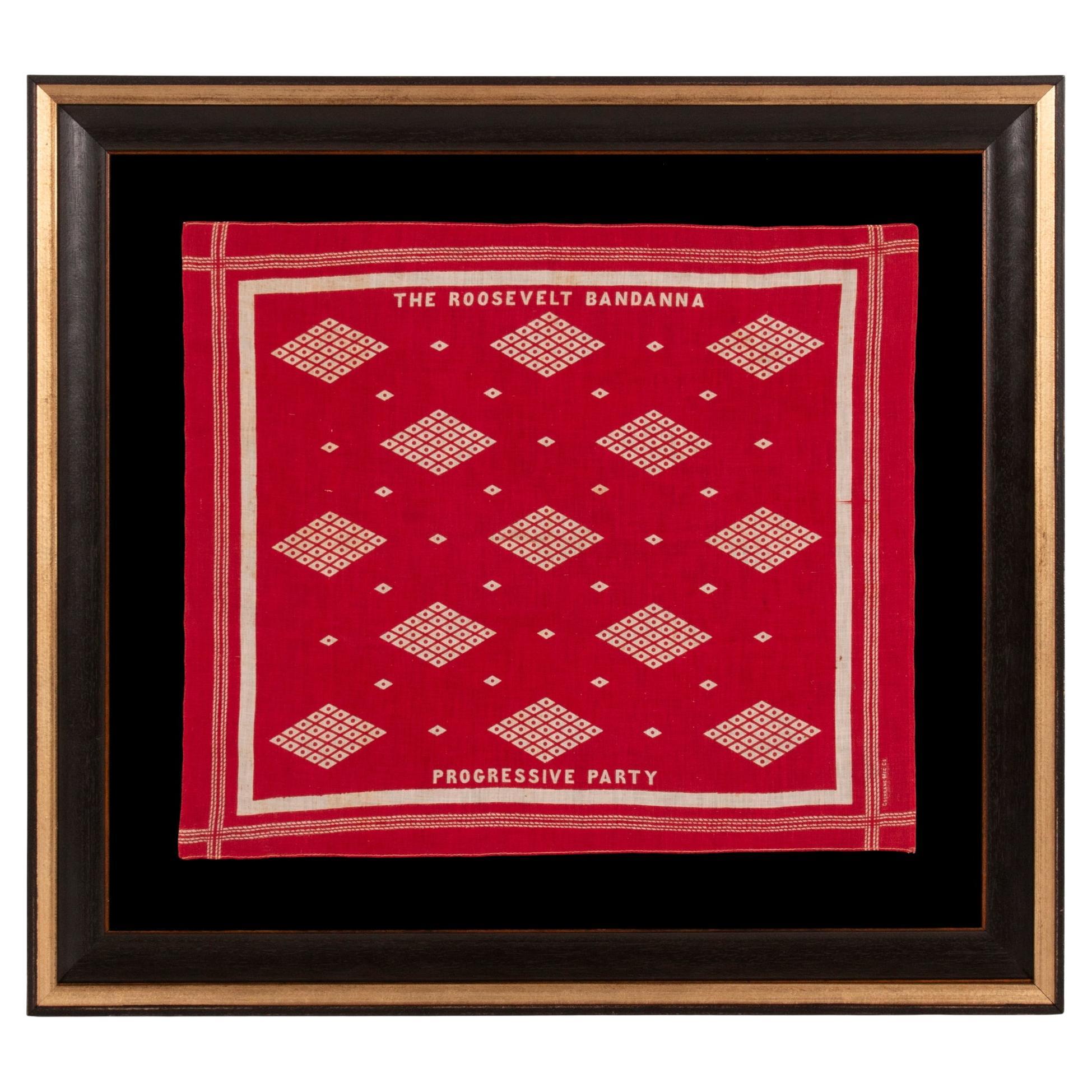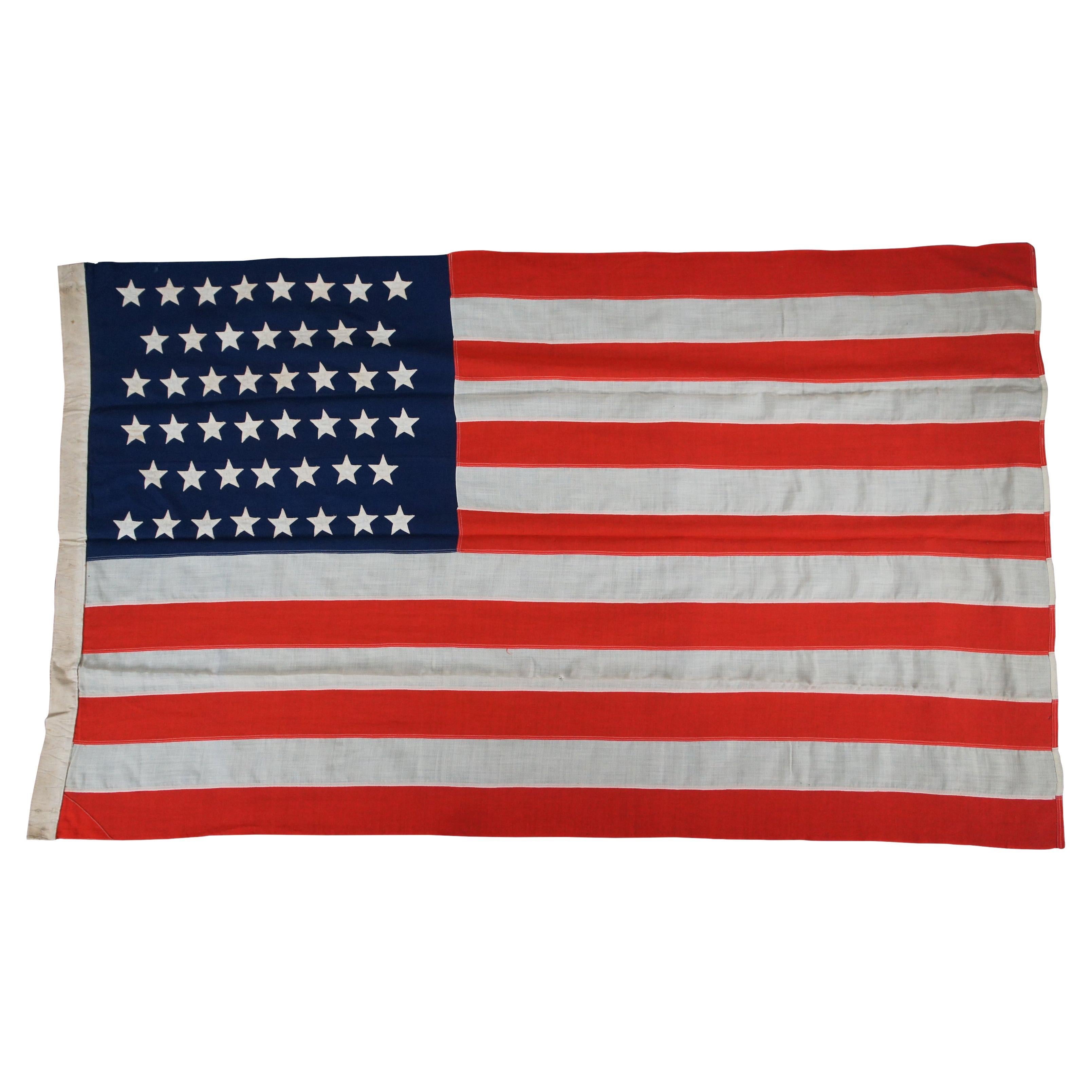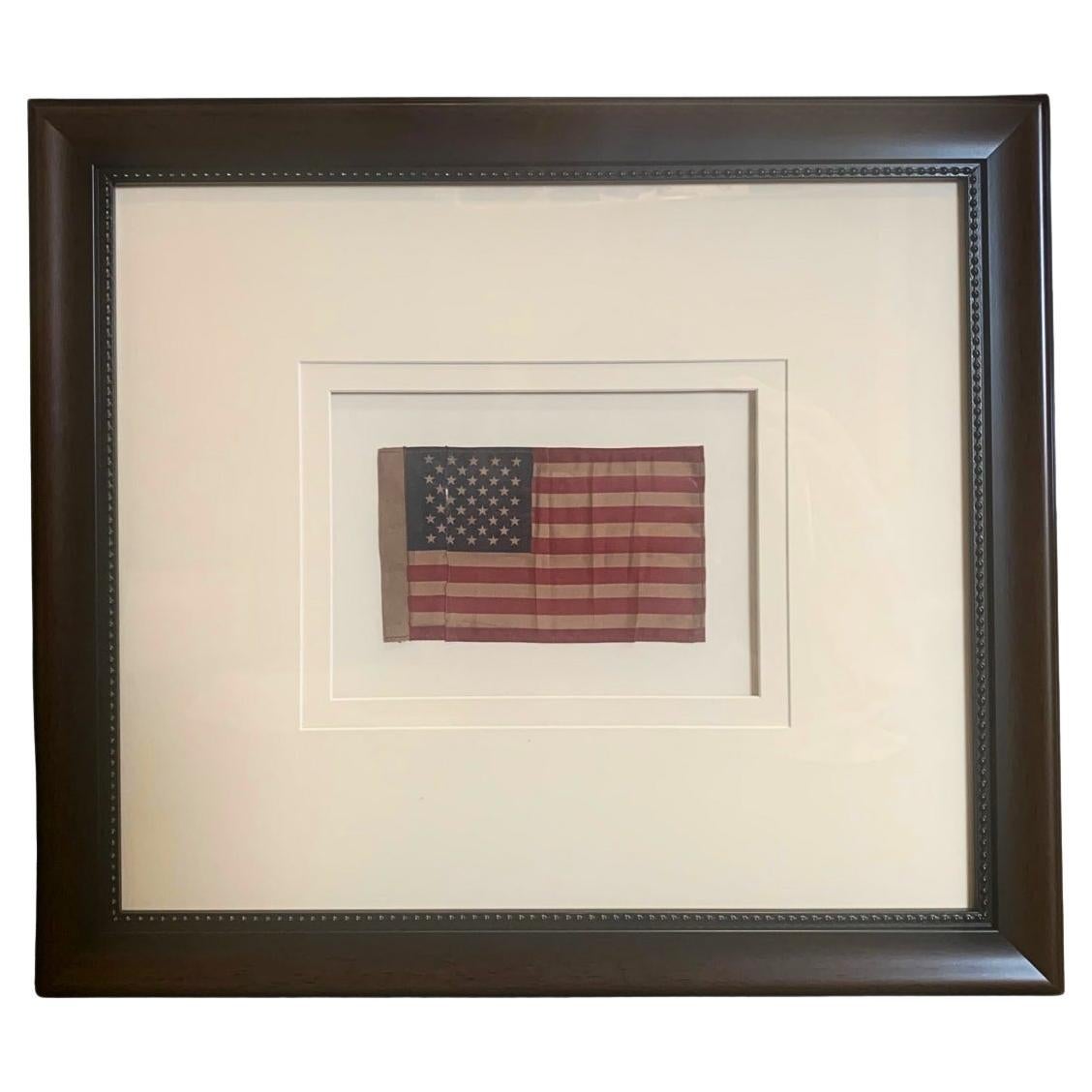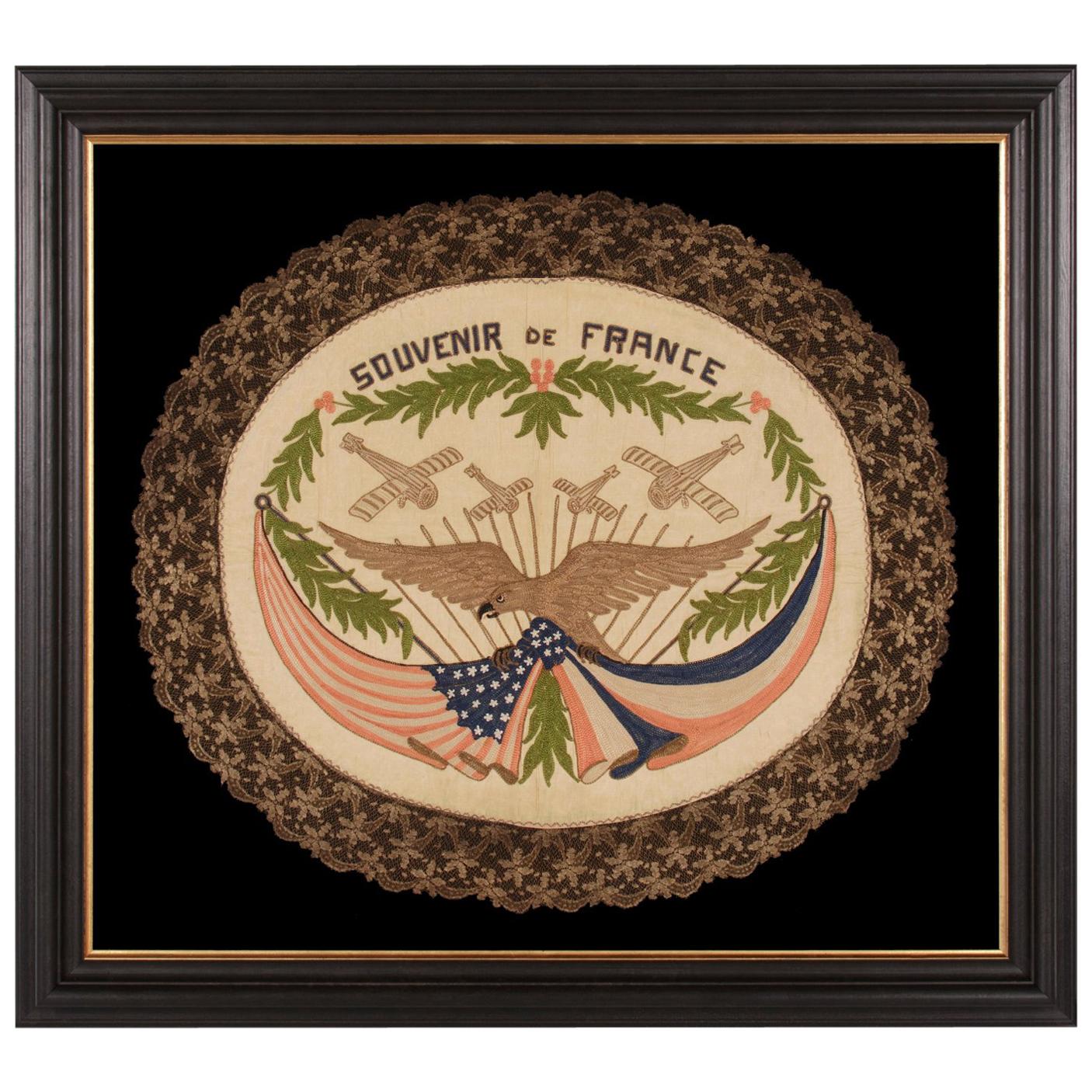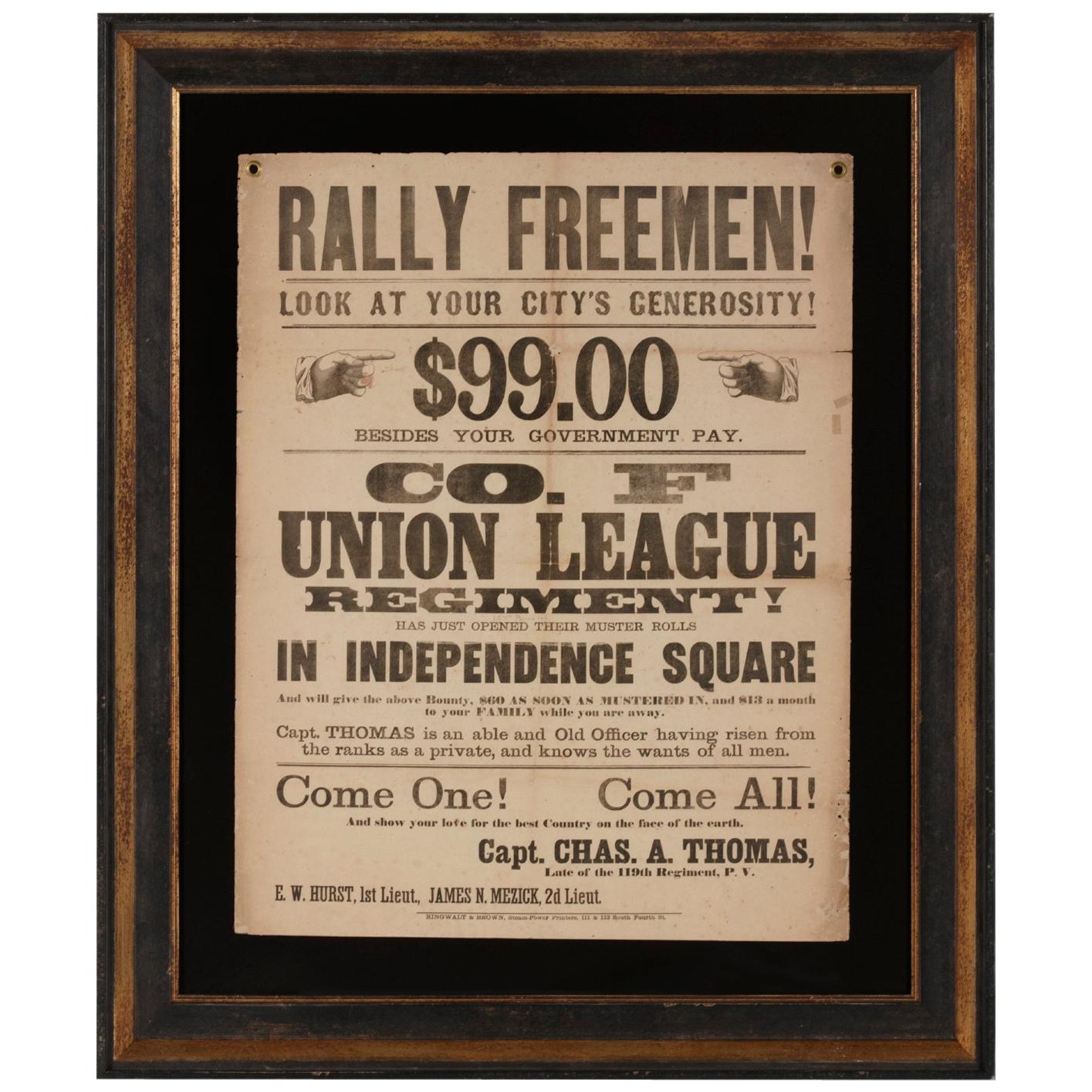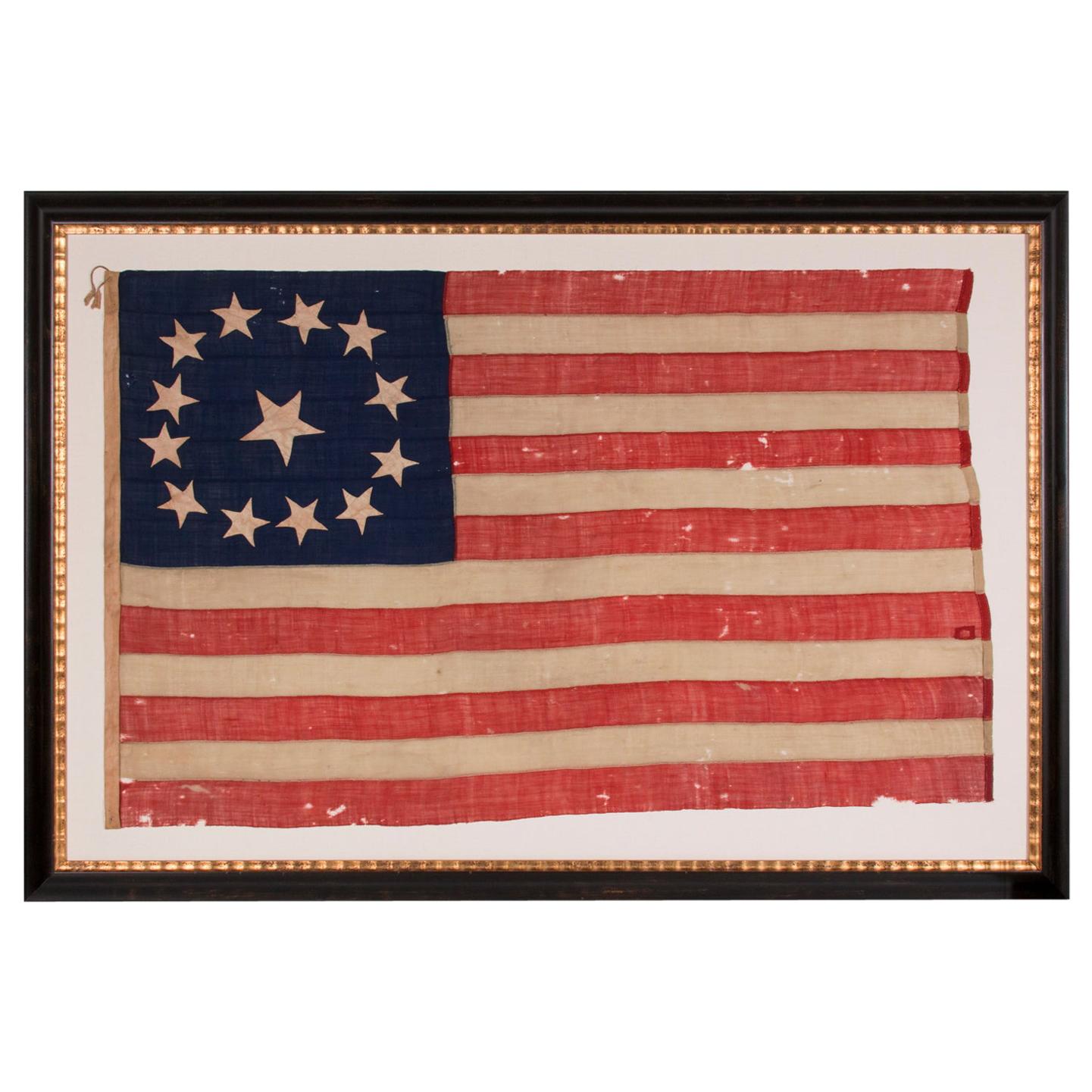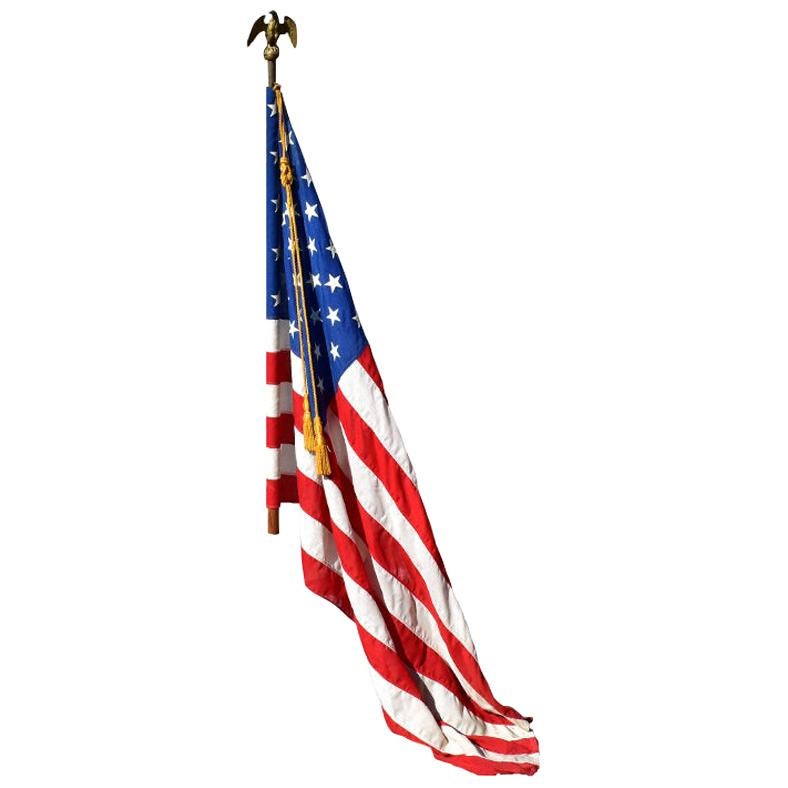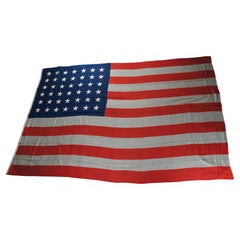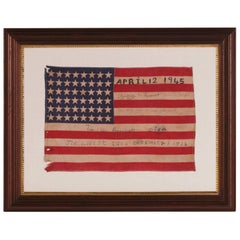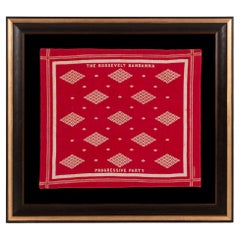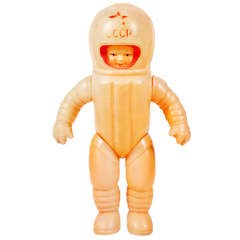
Space Baby - CCCP Cosmonaut, Soviet Socialistic Republic
View Similar Items
1 of 10
Space Baby - CCCP Cosmonaut, Soviet Socialistic Republic
About the Item
- Dimensions:Height: 13.78 in (35 cm)Width: 7.88 in (20 cm)Depth: 3.94 in (10 cm)
- Style:Space Age (Of the Period)
- Place of Origin:Russia
- Period:
- Date of Manufacture:approx. 1963
- Condition:Wear consistent with age and use.
- Seller Location:Berlin, DE
- Reference Number:1stDibs: LU103361105436
You May Also Like
- Rare Monumental 1890 Antique 42 Star United States of America FlagLocated in Dayton, OHMonumental fifteen foot 42 star American flag, circa 1889-1890. The 42-star flag is rare because only a limited number of 42-star flags were produced after Washington became a state on Nov. 11, 1889. But it takes a more intimate knowledge of flag trivia to know just why it happened this way. White stars are added to the blue field of the star-spangled banner on the Fourth of July after a state is admitted to the union. In the fall of 1889, several western territories became states. Dakota was admitted, and then split into North and South Dakota, on Nov. 2, 1889, which made them state and star numbers 39 and 40. Montana was named the 41st state on Nov. 8, followed by Washington, on Nov. 11. Only a few flag manufacturers began producing 42-star flags before the official addition of the 42nd star on July 4, 1890. Those who tried to jump the gun by being the first to produce an up-to-date flag were surprised when Idaho was admitted to the United States on July 3...Category
Antique 1890s American Classical Historical Memorabilia
MaterialsCotton
- Antique American Flag w/ Hand-Written Inscriptions Mourning the Death of FDRLocated in York County, PA48 STARS ON ANTIQUE AMERICAN FLAG WITH HAND-WRITTEN INSCRIPTIONS AND AN EMBROIDERED DATE OF APRIL 12TH, 1945, MOURNING THE DEATH OF PRESIDENT FRANKLIN DELANO ROOSEVELT: American national parade flag with 48 stars, printed on cotton, embellished with hand-written inscriptions and an embroidered date to commemorate the death of FDR on April 12th, 1945. “On this day in 1945, President Franklin D. Roosevelt died of a massive cerebral hemorrhage at his Warm Springs, Georgia, retreat at the age of 63. Roosevelt’s death in the final months of World War II was met with shock and grief throughout the Western world. Many Americans had no inkling of his decline in health. [He] had been president for more than 12 years, longer than any other person. He led the country through some of its greatest domestic and foreign crises to the impending defeat of Nazi Germany and within sight of Japan’s surrender...Category
Vintage 1940s American Political and Patriotic Memorabilia
MaterialsCotton
- 1912 Roosevelt Turkey Red Bandana, ca 1912Located in York County, PATurkey red bandanna, made for the 1912 presidential campaign of teddy Roosevelt, when he ran on the independent, progressive party (bull moose) ticket Printed cotton kerchief, made for the 1912 presidential campaign of Theodore Roosevelt when he ran on the Progressive Party ticket (a.k.a., the Bull Moose campaign). This graphic textile, in a classic, western style, typical of the iconic red bandanna, is indicative of both the Republican Party in the late 19th century, and T.R.’s love of the American West. In this example, a geometric design with diamonds, surrounded by multiple, linear borders, is accompanied by the following text along the top and bottom that reads: “The Roosevelt Bandanna” and “Progressive Party,” respectively. A maker’s mark in the lower right corner reads “Cochranes Mfg. Co.” Cochrane’s was known for their long-lasting, red dye process, called “Cochrane’s Turkey Red.”. It was really a process, as opposed to a dye itself, to which the name applied. The dye was actually a derived from a synthetic colorant called “alizarin,” imported by Alexander Cochrane’s family, who emigrated to the United States from 1847, and owned a chemical company in Massachusetts that produced the dye. The fabrics were produced by the family of John Cochrane, who emigrated from Renfrewshire, Scotland in 1844. Both families, who resided in Malden, Massachusetts initially, traced their ancestry to Barrhead, Scotland, in the heart of the textile-producing region, near Glasgow and Paisley. It was in Glascow that Turkey Red printed bandannas are said to have originated, in the shop of Henry Monteith & Company, in 1802.* TR's decision to enter the 1912 election was not exactly popular among many of his friends and former supporters. His participation manifested into a unique political incident, in which the independent, Roosevelt, beat out a major party ticket, garnering 27.4% of the vote. At the same time, however, he lost the White House, not only for himself, but for his former Republican friends as well, by dividing support between his own candidacy and that of incumbent President William Howard Taft...Category
Vintage 1910s American Political and Patriotic Memorabilia
MaterialsCotton
- Antique 46 Star WMH Horstmann Company United States of America Flag 83"By HorstmannLocated in Dayton, OHAntique forty six star large wool American flag by Horstmann Company, circa 1908-1912. Horstmann firm was founded by William H. Horstmann (1785-1850), who had immigrated to Philadelphia from Germany. Horstmann bought out a local swordmaker in 1828 and thereafter entered the military goods field. The firm benefitted from the Civil War, becoming the largest military goods supplier in the nation by 1864. WILLIAM H. HORSTMANN & SONS, Manufacturers of Dress Trimmings and Military Goods. 5th & Cherry Streets, Philadelphia, PA. This house was founded, in 1815, by William H. Horstmann, a native of Cassel, in Germany. He had learned the trade of silk-weaving in France, and, emigrating to the United States in the above-mentioned year, established himself in Philadelphia as a manufacturer of fringe, laces and trimmings of various kinds. He married the daughter of Frederick Hoeckly, a German settler in Philadelphia, and also a manufacturer of fringe, coach-lace and tassels. He devised several improvements in this trade, especially by introducing varieties in the styles and patterns of this class of goods, there being at that time only two patterns used in the trade, which were known as the Jefferson pattern and the Monroe pattern. In 1824, he introduced into this country from Germany the use of plaiting or braiding machines, and about the same time he was the first to introduce into this country the use of the Jacquard loom, for weaving patterns in textile fabrics. His location was in the first instance at No. 50 North Third street, but within a short time he removed to a store next to the Harp and Crown tavern, afterwards known as the City hotel, and continued his business within a short distance of this point for many years. In 1828, he commenced the manufacture of military trimmings as a special department, and this branch has grown to most important proportions, Horstmann's military goods being in demand throughout time country. The firm have also executed large Government contracts in this line for the War and Navy Departments. In 1831, he established a branch house in New York city, and about the same time erected a factory at the corner of Germantown road and Columbia avenue. The factory was continued here until time erection of the extensive building at Fifth and Cherry streets, where the works, salesrooms and offices of time firm now are. This massive structure is six stories high, and extends 140 feet on Fifth street and 200 on Cherry street, and reaches back to Race street. The separate departments into which the business is divided are thirty in number. More than 1000 distinct looms and machines are in use in the building, many of them very costly and some invented and used exclusively by this firm, the motive power being supplied by a steam engine of fifty horse power. The area covered by the works is about 11,000 square feet. Time number of hands employed is very large, about 500. When the erection of a vast factory at this point was first proposed, a strong opposition was made by time holders of the neighboring property. The ancient German Lutheran Church and burying ground, since removed, stood opposite the site, and a bill was introduced into the Legislature to forbid the use of a steam engine within 100 yards of any place of worship. The interests which such a bill would have affected injuriously, especially those of several newspapers, roused a strong opposition to it, and it failed to become a law. In 1845, William H. Horstmann, the founder of the house, retired from the business, and his two sons, William and Sigmund, assumed the management and it was under their direction that the new building, above described, was erected. The goods produced by this house are of almost endless extent and variety. They include goods woven from all the various textile fibres—cotton, wool, silk, etc.—in every style, color and pattern, and are used for an infinite number of purposes. Narrow woven goods are time staple production, made up into material for dresses for both sexes, for use in daily life, and for regalia for ""societies;"" for the costumes of the stage, the upholstering of houses and of carriages, the uniforms of soldiers, together with equipments for the same, and for funeral purposes. The raw material used in the manufacture is to a great extent very costly, and their store rooms often hold as much as $200,000 worth of goods in an unworked state. There are two rooms devoted to power looms in the factory, one for coach lace and one for other styles of weaving, in which about 250 of these machines are constantly running. The braiding machines in the coach lace room are very noteworthy. The cord to be covered with braid is drawn through an opening in time middle of a flat, circular, metallic plate, about 15 inches across. Up to a point on this cord, about a foot above the plate, the threads of the braiding material converge, like the ribs of a tent-roof, and there weave in and out and out and in, as the coating of braid grows, and time covered cord rises and is wound away above. The weaving is accomplished by the motion of the spools below that carry the different threads of the braid. These spools stand in uprights, which are carried round and amongst each other in curved slots in the above-mentioned broad metallic plate. All but two of these spools run in and out among each other, with a swift, easy and intricate motion, mind so rapid that time eye can hardly follow it, while one or two special spools run steadily round and round among time twisting spools with the most extreme swiftness. Many other machines, displaying equally ingenious mechanism, are used in the factory. The various details of equipment manufactured and supplied by this house are also important, both for their number and the superior quality of the manufacture. The one article of swords may be taken as an instance. This trade grew naturally and immediately out of the established army and navy goods department of the works, it being necessary that the sword itself should be furnished together with the sword-belt and other trappings all complete. Every part of the sword and trappings, with the exception of the blade, is made on the premises. The blades are almost all imported from the ancient German sword-blade emporium of Solingen, where, it is said, swords have been made ever since the year 1147, when Count Adolphus of Berg brought home from the East and established there the business of forging Damascus blades. There is in this department a stock of some thousands of blades, of many different patterns and sizes, ready to be set and finished. Any style or sword can be had from this warehouse, from the plainest kind up to a presentation sword...Category
Vintage 1910s American Classical Political and Patriotic Memorabilia
MaterialsWool
- "The Second World War, " by Winston ChurchillBy Houghton Mifflin & Co.Located in Austin, TXThe Second World War by Winston Churchill from Houghton-Mifflin Company, Boston. A vintage edition of Winston Churchill's six-volume memoir, The Second World War, for which he was a...Category
Mid-20th Century American Modern Books
MaterialsPaper
- 41-Star Printed Flag Waver, Celebrating Montana Statehood, 1889Located in Colorado Springs, COPresented is a very rare, 41-star flag waver celebrating Montana statehood. The flag is printed on linen and dates to 1889. The dark blue canton is printed with forty one stars in nine rows of alternating counts of five and four stars. Thirteen red and white stripes complete the flag’s design. The history of Montana statehood is a long one. Numerous Native American tribes originally inhabited the Montana Territory. Meriwether Lewis, William Clark, and the members of their expedition were the first explorers to document a journey through Montana and the lands of the Louisiana Purchase. Soon, forts were established to facilitate regular fur trading with Native American tribes. Missionaries and trailblazers followed. The discovery of gold in the early 1860s sped the creation of the Montana Territory. As settlers and gold prospectors entered Montana in the 1860s and 1870s, conflicts with the Native Americans arose. Perhaps the most famous clash between Native Americans and the United States military occurred in Montana on June 25, 1876. On that day, Sioux and Cheyenne defeated Lieutenant Colonel George Armstrong Custer‘s 7th United States Cavalry regiment at the Battle of the Little Bighorn. A year later, Nez Percé Chief Joseph surrendered in the Bear Paw Mountains of Montana. Lured by copper in the 1880s, mining brought even more settlers to Montana. Rich grazing lands for cattle and sheep attracted other pioneers. Each of the states in America, with the exception of the original thirteen, Texas, and California, was first organized as a territory before achieving admittance to the Union as a state. Originating with the Ordinances of 1785 and 1787, the territorial system provided the expanding U.S. with a method to govern frontier areas until they gained sufficient population and economic maturity to qualify for statehood. Not surprisingly, residents of frontier territories usually demanded quick admission to statehood so they could gain full control of their local governments. Montana was a territory for 25 years – from the creation of Montana Territory in 1864 until the territory was admitted to statehood in 1889. On November 2, 1889, North and South Dakota were added to the Union as the 39th and 40th states, the first time in history that two states were admitted on the same day. Montana became the 41st state on November 8, predating Washington, the 42nd state, by only three days. Flag makers were not in the business of making out-of-date flags. As a result of these rapid changes in the number of states, only a small number of 41-star flags or commemorative items were ever produced, thereby making any 41-star flag exceedingly rare. CONDITION: Good condition. This flag is printed, with a hemmed headband and fly end in a running stitch...Category
Antique 1880s American Political and Patriotic Memorabilia
MaterialsLinen
Recently Viewed
View AllMore Ways To Browse
Rare Vintage Dolls
Vintage Baby Dolls Vintage Dolls
Vintage Baby Doll
Vintage Baby Dolls Dolls
Retro Baby Dolls
Boy Toy
Vintage Cosmonaut
Cccp Vintage
Retro Space Toy
Retro Space Toys
Boy Doll
Collectable Baby Dolls
Baby Boy Room
Vintage Baby Toys
Vintage Baby Doll Furniture
Vintage Boy Toys
Vintage Toys 60s
60s Vintage Toys


